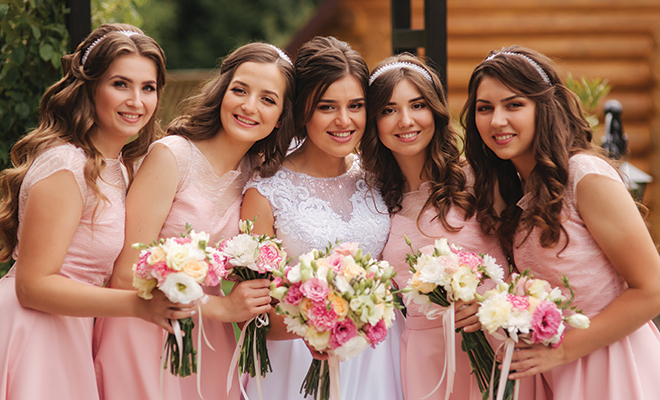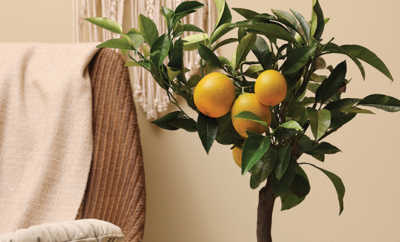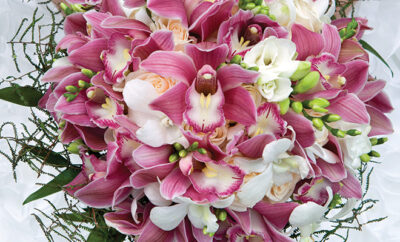
Wedding Traditions: A Blend of Ancient and Modern
Today’s weddings may be a blend of ancient, modern, religious and cultural traditions that are individualized by the bridal couple. We’ve taken a look at the origins of customs that brides and
grooms weave into their lives as they approach marriage.
In 2021, weddings are undergoing a metamorphosis forced upon society by a global pandemic. Brides may choose to downsize, serve a plated meal instead of offer a buffet, postpone all festivities or have a small ceremony and a larger celebration later. Nevertheless, some aspects of weddings never change.
The Dress
Long, flowing white gowns say bride to everyone. Traditional white gowns with full or slim skirts, veils and trains, an abundance of chiffon and lace, a high bodice with cap sleeves and covered buttons accessorized with white silk pumps create visions of old-time charm. The tradition started with Queen Victoria, and women followed her lead. Your grandmother’s dress, carefully handed down to each generation of new brides, is a lovely family tradition.
Even if you don’t have such a dress, you can still have a traditional wedding gown that exudes extravagance. Modern dresses change the styling but not the sentiment. Today’s dresses are often strapless, showing off the beautiful shoulders and cleavage of the bride.
The Bridal Party
The tradition of a “best man” likely has its origins with the Germanic Goths, when it was customary for a man to marry a woman from within his own community. If no eligible women lived within a town, a man might have to seek out and capture a woman from another community, seizing her forcibly. The groom would naturally select a strong male companion for the task. Today, the groom selects his best man to assist with the many responsibilities that occur during the period leading up to the wedding, such as providing support, assistance and keeping him calm.
In ancient Rome, the bride’s attendants dressed identically to the bride to protect her and distract the evil spirits from harming her in this superstitious culture. In today’s weddings, bridal attendants give emotional support to the bride prior to the wedding day, host wedding showers and a bridal luncheon, and help her attend to all the details that lead up to the moment when she walks down the aisle.
A Plethora of Flowers
Brides in ancient times carried herbs to ward off evil spirits. In Europe in the mid-fourteenth century, brides carried garlic and dill to block odors and to protect them from the plague. Slowly, the bride began replacing the repugnant herbs with more beautiful flowers and more pleasant scents.
The floral industry responded with flowers imported year-round. In 2021, florists will be focusing on locally grown and more easily available choices that complement the wedding’s theme colors.
The Symbol of Lasting Love
Many of our supposed traditions are newer than you might realize. Some believe that the wedding ring tradition has its origins in the Roman belief of Vena Amoris, or the ring finger being directly connected to the heart by a blood vessel.
Others say this is more likely a modern tradition. In 860 CE, Pope Nicholas decreed that the future bride should have an engagement ring to signify the groom’s financial commitment; it must be made of gold to be considered valid. In 1215, Pope Innocent III declared that the engagement period should be lengthened and couldn’t be skipped to avoid the engagement ring! The ring protected the bride, but it was a DeBeers advertising slogan in 1947, A Diamond Is Forever, that began the “tradition” of the diamond engagement ring. The groom’s wedding band is another modern tradition that appeared in the early 20th century in the United States.
The Ceremony
The wedding ceremony follows cultural and religious beliefs of the engaged couple. In a typical American wedding, the ushers seat the guests before the ceremony. The bride’s mother is seated last unless she accompanies her husband and daughter in the processional. The groom, the best man and minister take their places at the front of the gathered guests. The ushers enter in pairs, followed by the wedding party. The bride enters escorted by her father and possibly her mother. The officiant conducts the ceremony and vows and rings are exchanged, followed by the officiant pronouncing the couple husband and wife.
Traditions present in other religious wedding ceremonies may include tying a knot, jumping a broom, walking around an altar, or the breaking of a fragile glass, each of which has meanings within the religion.
Modern couples incorporate traditions and create their own, but the most lasting remembrance is the love and support of the couple by their family and friends. ■
Sources: aeon.co, brideandgroom.com.au, brides.com, nytimes.com, people.howstuffworks.com, simplepleasures.us and theknot.com.







